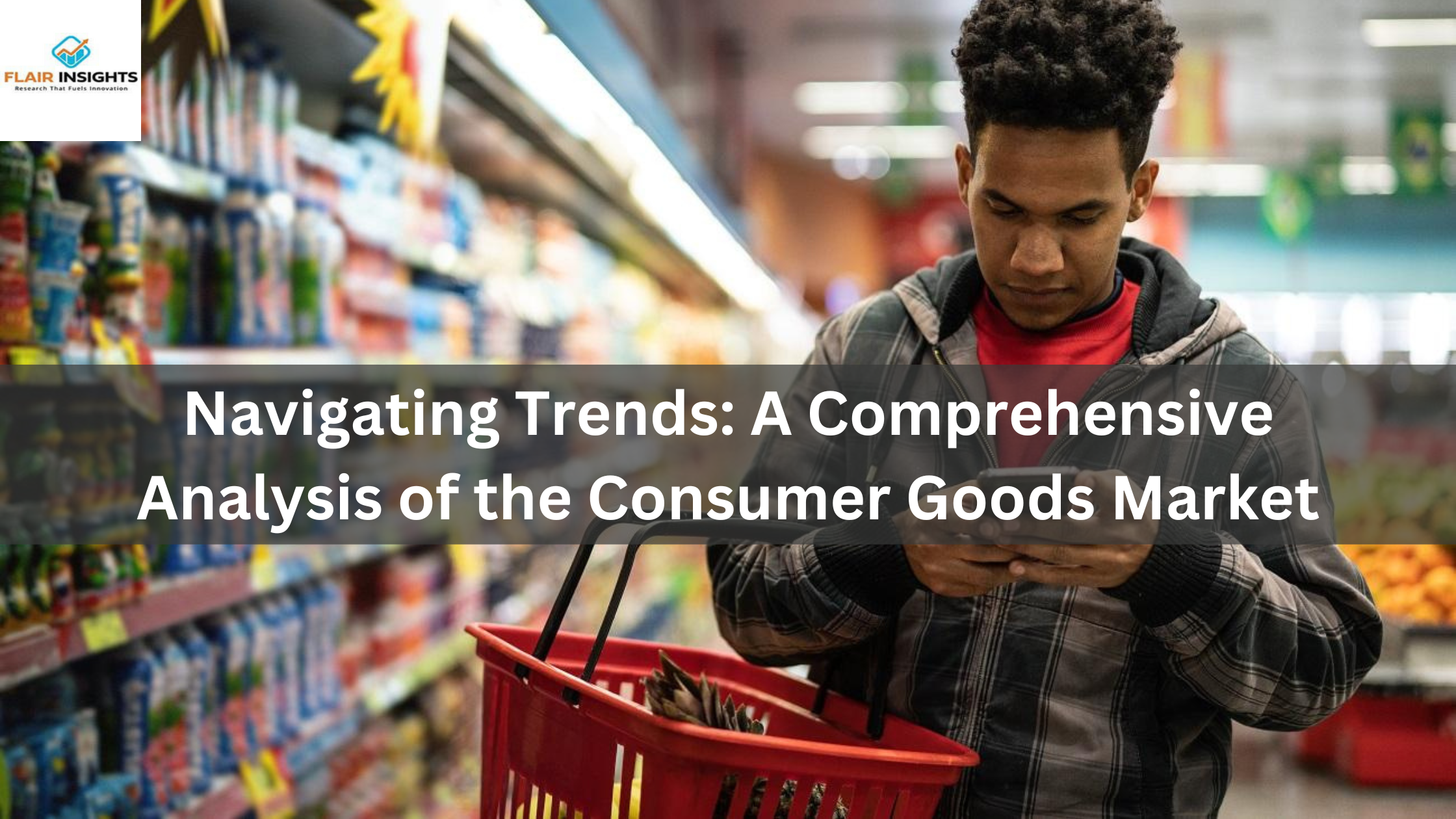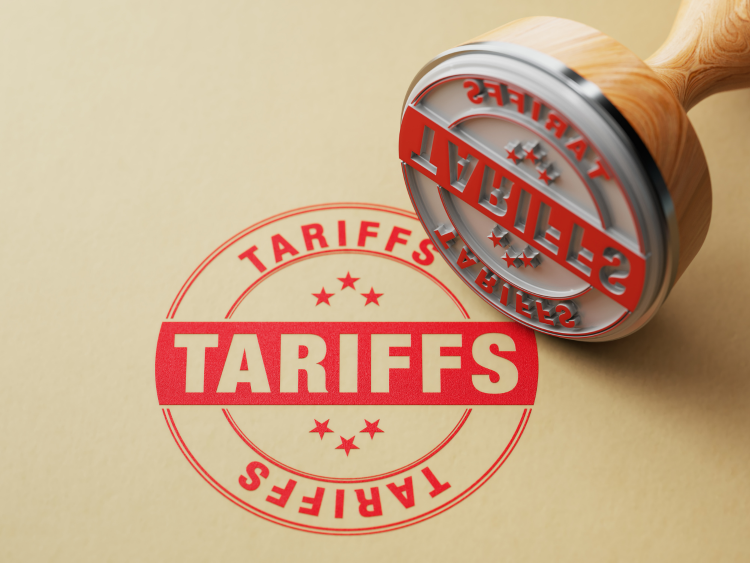
The consumer goods market stands at the crossroads of innovation, sustainability, and evolving consumer expectations. In this era of constant change, businesses navigating this dynamic landscape must not only comprehend existing trends but also anticipate and adapt to emerging ones. This comprehensive analysis delves into the pivotal factors shaping the consumer goods market, providing insights and strategies to guide businesses toward sustainable success.
1. E-Commerce Revolution:
The seismic shift toward e-commerce has reshaped consumer behavior, posing both challenges and opportunities for businesses. The convenience and accessibility of online shopping have become paramount, necessitating a strategic focus on digital platforms. Successful companies are not just embracing e-commerce but also optimizing their online presence, ensuring a seamless and personalized shopping experience. The integration of augmented reality and virtual try-on features further enhances the online shopping journey.
1.1. Augmented Reality in E-Commerce:
Embracing augmented reality (AR) enhances the online shopping experience by allowing consumers to virtually try products before purchase. From furniture placement in a living room to trying on clothing virtually, AR provides a new dimension to e-commerce, reducing returns and increasing customer satisfaction.
1.2. Logistics and Last-Mile Delivery Innovations:
To meet rising customer expectations for faster delivery, businesses are investing in innovative logistics solutions and last-mile delivery technologies. Drones, autonomous vehicles, and optimized route planning contribute to a more efficient and timely delivery process.
2. Sustainability and Ethical Consumption:
A growing eco-conscious consumer base demands more than just products; they seek a commitment to sustainability and ethical practices. From responsibly sourced materials to eco-friendly packaging, businesses must align with these values. Transparency in the supply chain is crucial, and businesses can leverage technology, such as blockchain, to provide consumers with a real-time view of the journey from production to purchase. Communicating these efforts effectively fosters trust and loyalty among conscious consumers.
2.1. Circular Economy Initiatives:
Moving beyond traditional sustainability practices, businesses are exploring circular economy initiatives. This includes designing products with recyclability in mind, encouraging product recycling programs, and creating closed-loop systems to minimize waste.
2.2. Carbon Neutral and Net-Zero Commitments:
Businesses are increasingly committing to carbon-neutral and net-zero emission goals. This involves reducing carbon footprints across the entire supply chain and investing in carbon offset programs to counterbalance unavoidable emissions.
3. Personalization and Customization:
The era of one-size-fits-all is giving way to personalization and customization. Advancements in artificial intelligence and data analytics empower businesses to understand individual preferences and offer tailor-made products and experiences. From personalized product recommendations to bespoke packaging, customization not only meets consumer expectations but also cultivates brand loyalty. The challenge lies in striking the right balance between data-driven personalization and respecting consumer privacy.
3.1. AI-Powered Customer Insights:
Harnessing the power of artificial intelligence, businesses can gain deeper insights into customer preferences, behavior, and purchasing patterns. This data-driven approach enables more accurate personalization strategies and targeted marketing efforts.
3.2. Mass Customization Strategies:
Mass customization goes beyond personalized recommendations, allowing consumers to actively participate in the design and creation of their products. This level of involvement enhances the emotional connection consumers have with the brand.
4. Tech Integration – Internet of Things (IoT) and Smart Devices:
The Internet of Things (IoT) has infiltrated the consumer goods market, ushering in an era of smart devices and connected living. Businesses can innovate by integrating IoT into their products, creating intelligent solutions that seamlessly fit into consumers' daily lives. Smart appliances, wearables, and other IoT-enabled products not only enhance functionality but also influence purchasing decisions. Companies that invest in cutting-edge technology gain a competitive edge in catering to the tech-savvy consumer.
4.1. Smart Packaging and Supply Chain Visibility:
IoT-enabled smart packaging provides real-time information about a product's condition, ensuring quality and reducing waste. Additionally, supply chain visibility through IoT technologies enhances efficiency and transparency, crucial elements in meeting consumer demands for traceability.
4.2. Health and Wellness Tech Integration:
The convergence of consumer goods and health and wellness tech is on the rise. From smart water bottles that track hydration to skincare devices with personalized routines, businesses can tap into the growing market of health-conscious consumers.
5. The Impact of Social Media:
Social media platforms have become the epicenter of consumer influence, shaping opinions and driving trends. Beyond traditional marketing, businesses must engage in influencer marketing, encourage user-generated content, and harness the power of social commerce. Authenticity is paramount in building a meaningful connection with the audience. Leveraging social media for customer service and feedback further strengthens brand-consumer relationships in the digital age.
5.1. Emergence of Social Commerce Platforms:
Social commerce is evolving with platforms integrating shopping features directly into social media. Businesses need to adapt their strategies to capitalize on this trend, creating a seamless shopping experience within the social media ecosystem.
5.2. Social Listening and Brand Sentiment Analysis:
Proactively monitoring social media for brand mentions and sentiment analysis allows businesses to stay agile in responding to consumer feedback. This real-time insight is invaluable for shaping marketing strategies and addressing concerns promptly.
6. Rise of D2C (Direct-to-Consumer) Models:
The rise of Direct-to-Consumer (D2C) models marks a strategic shift in the consumer goods landscape. Establishing a direct relationship with customers empowers brands with greater control over their image, pricing, and overall customer experience. Successful D2C models focus on creating immersive online experiences, utilizing data analytics to understand consumer preferences, and maintaining agility in responding to market shifts. The integration of subscription models and exclusive online releases adds another layer of engagement for consumers.
6.1. Subscription-Based Business Models:
The subscription model extends beyond streaming services, with consumer goods businesses offering subscription boxes, replenishment services, and curated product bundles. This model enhances customer loyalty and provides a predictable revenue stream.
6.2. Digital-First Brand Building:
D2C brands are leveraging digital channels to build their brand identity from the ground up. By prioritizing online presence, social media engagement, and direct communication with consumers, these brands create a sense of exclusivity and community.
7. Globalization and Cultural Sensitivity:
In an interconnected world, businesses must transcend borders while respecting cultural nuances. Tailoring products and marketing strategies to local tastes is not just a choice but a necessity for success in the global consumer goods market. Cultural sensitivity, combined with an understanding of regional preferences, contributes to a brand's acceptance and resonance in diverse markets. Localization efforts extend beyond language to encompass social norms, traditions, and consumer behaviors.
7.1. Adaptive Localization Strategies:
Businesses need to adopt adaptive localization strategies that go beyond language translation. Understanding cultural nuances, preferences, and historical contexts ensures that products resonate with diverse global audiences.
7.2. Global Collaboration and Partnerships:
Collaborative efforts with local influencers, artists, and businesses can strengthen a brand's connection with regional audiences. This approach goes beyond selling products; it involves actively participating in and contributing to the local community.
Conclusion:
To thrive in the consumer goods market, businesses must adopt a holistic approach that embraces technological innovation, sustainability, personalization, and global awareness. A resilient strategy involves a continuous commitment to digital transformation, a focus on sustainable practices, and an unwavering understanding of evolving consumer needs. By staying ahead of the curve and embodying these pillars, businesses can not only weather the storms of change but also emerge as leaders in this dynamic and competitive landscape. The future belongs to those who navigate the trends with agility, foresight, and a deep understanding of the evolving consumer mindset.
Trending Posts

Global Silver Nanoparticles Market
The global silver nanoparticles market was valued at $2.08 billion in 2020, and is projected to reach $4.1 billion by 2027, growing at a CAGR of ~17%

The Basic Pension Comes - Federal Cabinet Decides On the Pension Supplement
Financial security in old age is an issue that is causing stomach pains for more and more people in Germany. Low-wage earners fear the elderly. The ba

The Future of Artificial Intelligence
In recent years, the field of artificial intelligence (AI) has witnessed unprecedented growth and transformative advancements. As AI technologies

"LNG Bunkering" Here is something you must know!
In the current scenario of growing pollution, companies are trying to adapt more and more sustainable approach that not only gives eco-friendly result

Sailing into the future with Autonomous Ships
Autonomous Vehicles (AVs) are the uproar of this era. After airways, thanks to the companies like Tesla, that people are now getting used to see drive

Rising Demand For Uninterrupted Power Supply Is Expected To Drive The Power Rental Market
Todays world is totally reliant on electric power. There are many things which are not manageable without electricity. Power rental is a concept where

Rapidly growing IT industry coupled with the trend of bringing your own device (BYOD) is expected to provide new opportunities for growth of Cloud Collaboration
Cloud collaboration is the process of sharing and co-authoring the computer-based work through cloud technology

Fact check on UV Disinfection for COVID-19
Many regulatory authorities and bodies believe that UV disinfection technologies can play a role in a multiple barrier approach to reducing the transm

Vaccination: Vaccination Against Measles is Now Mandatory in Germany
The subject of compulsory vaccination has always heated peoples minds and caused emotionally charged discussions. The latest law in this area - the ob

The Global Ventilator Market Grows at a CAGR of 7.75 %
The Global Ventilator Market, which was at $688 million in the year 2016, is about to double by the year 2025, and reach a value of $1,347 million. Th
Recent Posts

Tariffs & Trade: Key Trends, Policies, and Market Impact
A tariff is a tax imposed by a government on imported or exported goods. It is primarily used to regulate international trade by either encouraging domestic production or generating revenue for the government.

The Global Buy Now Pay Later (BNPL) Market: Growth and Opportunities
The global Buy Now Pay Later (BNPL) market has emerged as a revolutionary financial solution, transforming how consumers approach shopping and payments. Offering flexibility and convenience, BNPL allows consumers to make purchases and pay.

Global Motorhome Market: Growth and Forecast
The motorhome market has gained significant momentum over the past decade, driven by rising interest in outdoor tourism, evolving consumer lifestyles, and advancements in vehicle design and technology. As a preferred option for travelers seeking.

The Global Poppy Seed Market: Growth and Trends
Poppy seeds, derived from the opium poppy plant (Papaver somniferum), have been a vital component in global culinary, pharmaceutical, and personal care industries for centuries. The global poppy seed market is gaining traction due to its versatility.

Global Plant Breeding and CRISPR Plants Market
The global food industry is facing immense pressure due to rising population levels, diminishing arable land, and the impact of climate change. Innovations in plant breeding, particularly the use of CRISPR technology, are reshaping the agricultural .

Global Pheromones Market – Trends, Opportunities, and Forecast
The global pheromones market has witnessed significant growth, primarily driven by the rising demand for eco-friendly pest control solutions in agriculture. Pheromones, natural chemicals emitted by insects and other organisms to communicate.

The Role of Technology in Oil and Gas Risk Management
In an industry as dynamic and complex as oil and gas, risk management is crucial for ensuring operational efficiency, regulatory compliance, and safety. Risk management software has become an indispensable tool for companies in this sector.

Global Smart Grid Sensors Market
The global energy landscape is undergoing a significant transformation, with smart grid technologies at the forefront. Smart grid sensors, a critical component of modern energy grids, enable efficient monitoring, energy distribution.

Global Photovoltaic Glass Market Research Report
The global photovoltaic (PV) glass market is experiencing unprecedented growth, driven by the accelerating shift towards renewable energy and the integration of sustainable materials in construction. This report delves into the market’s key growth.

Exploring the Growth of the Global Micro Solar Inverter Market
The Global Micro Solar Inverter Market is forecasted to expand significantly, growing from an estimated value of USD 4.8 billion in 2024 to USD 14.6 billion by 2030, with a CAGR of 24.2%. This growth reflects increased adoption of solar energy system
.png)